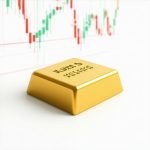Understanding Gold Trading: Why It Matters for Investors
Gold trading has always been a significant component of investment strategies worldwide. Investors turn to gold not only as a means of diversifying their portfolios but also as a hedge against economic instability and inflation. With its intrinsic value and historical significance, gold continues to attract both seasoned and new investors alike. Understanding the key factors that influence gold trading is essential for anyone looking to maximize their investment returns.
What Are the Key Factors to Consider in Gold Trading?
Several crucial elements come into play when trading gold. Here are some of the most important factors:
1. Economic Indicators
Factors such as inflation rates, interest rates, and employment data can significantly impact gold prices. For instance, higher inflation often leads to increased demand for gold as a safe-haven asset, driving prices up. Conversely, rising interest rates can strengthen the dollar, potentially lowering gold prices. Monitoring these economic indicators can guide your trading decisions.
2. Supply and Demand Dynamics
The balance between gold supply and demand is another critical factor. A significant increase in demand, whether from jewelry production, industrial use, or investment, can drive prices higher. On the other hand, increased mining production or sales from central banks can lead to a surplus, causing prices to drop. Understanding these dynamics can help traders identify potential price movements.
3. Geopolitical Events
Gold often reacts to geopolitical tensions and crises. Events such as wars, economic sanctions, or political instability can lead to increased demand for gold as a safe haven. For example, during times of uncertainty, investors may flock to gold, causing prices to rise sharply. Keeping an eye on global events can provide insights into potential market reactions.
4. Currency Fluctuations
The value of the U.S. dollar is inversely related to gold prices. A weaker dollar makes gold cheaper for foreign investors, often increasing demand. Conversely, a strong dollar can lead to decreased demand and lower gold prices. Understanding currency trends is crucial for gold traders to anticipate price movements effectively.
5. Market Sentiment and Speculation
Investor sentiment and speculation play significant roles in gold trading. Market trends, news, and analysts’ opinions can create momentum, influencing traders’ decisions. Following market sentiment can help you gauge the overall mood towards gold and guide your trading strategy.
How Can You Start Trading Gold Effectively?
To embark on your gold trading journey, consider starting with a solid investment strategy. Familiarize yourself with various trading techniques, such as futures contracts, ETFs, or physical gold investments. If you’re looking for more detailed insights, check out our post on Exploring the Best Gold Trading Techniques for 2025.
Additionally, it’s beneficial to keep learning about market trends and updates. Websites like Investing.com provide valuable resources to help investors stay informed about gold trading dynamics. Remember, the more informed you are, the better your trading decisions will be.
Join the conversation! What are your thoughts on gold trading? Have you had success with it? Share your experiences in the comments below!
Diving Deeper into Gold Trading: Strategies for Success
Successful gold trading requires a combination of knowledge, strategy, and adaptability. As you explore the world of gold trading, consider incorporating various strategies tailored to current market conditions. These approaches will not only enhance your trading effectiveness but also help you navigate the complexities of the gold market.
What Trading Strategies Should You Consider for Gold?
When it comes to gold trading, several strategies can lead to successful outcomes. Here are some key trading strategies to consider:
1. Technical Analysis
Utilizing charts and historical price data can unveil patterns and trends in gold prices. Technical analysis involves examining these price movements to forecast future price actions. Tools such as moving averages, RSI (Relative Strength Index), and Fibonacci retracement levels can provide valuable insights for traders.
2. Fundamental Analysis
Understanding the fundamental factors that influence gold prices is crucial. Events like changes in central bank policies, geopolitical tensions, or significant economic reports can impact market sentiment. Keeping abreast of news from authoritative sources like Wikipedia can help you make informed decisions.
3. Diversification Within Gold Investments
Diversifying your gold investments can minimize risks. Consider investing in different forms of gold, such as gold ETFs, mutual funds, or physical gold. Each investment type has its benefits—while physical gold offers security, ETFs provide liquidity. For more on this, check out our post on Maximize Gains: Top Gold Investment Strategies Unveiled.
4. Timing Your Trades
Timing is everything in trading. Identifying the right moment to buy or sell can significantly impact your profits. Market sentiment can shift rapidly, so staying updated on economic indicators and trends is vital. Tools like economic calendars will assist you in tracking key events that may influence gold prices.
5. Risk Management Techniques
Effective risk management is essential for long-term success in gold trading. Setting stop-loss orders can help protect your investments from significant downturns. Additionally, determining the right position size based on your risk tolerance ensures you don’t overextend your investments.
How Do Market Trends Affect Gold Trading?
Market trends play a pivotal role in gold trading. Understanding whether the market is bullish or bearish can help you determine your trading approach. In a bullish market, prices are expected to rise, making it an opportune time to buy. Conversely, in bearish conditions, selling may be the best option. Keeping a close eye on market trends will enable you to adapt your strategies accordingly and optimize your trading outcomes.
Have you tried any specific gold trading strategies? What has been your experience? Share your thoughts in the comments!
Navigating Gold Trading: Understanding Market Influences
As you delve deeper into gold trading, it’s crucial to grasp how various market influences can affect your investment strategies. Keeping an eye on global economic conditions, investor behavior, and policy changes can provide insights into potential price movements. This knowledge can empower you to make informed decisions and enhance your trading effectiveness.
How Do Economic Policies Impact Gold Prices?
Economic policies, particularly those enacted by central banks, play a significant role in shaping gold prices. When central banks adjust interest rates or implement quantitative easing, it can lead to fluctuations in gold demand. For instance, lower interest rates often encourage investors to turn to gold as an alternative investment, driving its price up. Conversely, higher rates may strengthen the dollar, leading to decreased gold demand. Understanding these dynamics can help you anticipate market trends and adjust your trading strategy accordingly.
What Are the Long-Term Trends in Gold Trading?
Long-term trends in gold trading often reveal valuable insights into the market. Over the past several decades, gold has consistently shown resilience during economic downturns, making it a favored asset among investors. Factors such as inflation, currency devaluation, and geopolitical instability can contribute to gold’s enduring appeal. By recognizing these long-term patterns, you can better position your portfolio to benefit from potential market shifts.
People Also Ask: What Are the Benefits of Investing in Gold?
Investing in gold offers numerous benefits, including:
- Diversification: Gold can act as a hedge against stock market volatility, providing a level of stability to your investment portfolio.
- Inflation Hedge: Historically, gold maintains its value in inflationary environments, making it a reliable store of wealth.
- Liquidity: Gold investments are generally highly liquid, allowing you to quickly convert your assets into cash when needed.
As an investor, understanding these advantages can help you make informed decisions about incorporating gold into your investment strategy. For more comprehensive insights, consider exploring the impact of economic policies on gold prices.
What Resources Can Help You Stay Informed About Gold Trading?
To remain updated on the gold market, utilize reputable resources like Kitco, which provides real-time market data, analysis, and news surrounding precious metals. Staying informed about market trends and expert opinions can enhance your trading strategies and decision-making abilities.
Join the Discussion! What strategies have you found most effective in gold trading? Share your thoughts and experiences in the comments below! Your insights could help fellow investors navigate the complexities of the gold market.
Ready to elevate your gold trading game? Explore our post on Gold Investment Strategies for more tips on maximizing your returns.
Mastering Gold Trading: Advanced Strategies for Investors
As you continue your journey into gold trading, it’s important to adopt advanced strategies that can enhance your performance in the market. With the right techniques, you can effectively navigate fluctuations and capitalize on emerging opportunities. Here, we delve into sophisticated methods that can help you take your trading to the next level.
What Are Some Advanced Gold Trading Techniques?
Advanced gold trading techniques often involve a deeper understanding of market dynamics and require unique tools and approaches. Here are some strategies to consider:
1. Swing Trading
Swing trading focuses on capitalizing on short- to medium-term price movements in gold. Traders use technical analysis to identify potential price swings, entering and exiting positions within days or weeks. This strategy allows traders to benefit from market volatility without the need for constant monitoring. For effective swing trading, consider utilizing tools like the MACD (Moving Average Convergence Divergence) to spot trends.
2. Hedging with Options
Options trading offers a unique way to hedge against potential losses while still participating in the gold market. By purchasing put or call options, traders can protect their investments from adverse price movements. This method requires a solid understanding of options pricing and market behavior, making it suitable for more experienced traders. Resources like Investopedia offer comprehensive guides on how to utilize options effectively.
3. Algorithmic Trading
Algorithmic trading employs computer algorithms to execute trades based on pre-defined criteria. This method can process vast amounts of data quickly, allowing traders to capitalize on small price changes. While algorithmic trading requires technical knowledge and programming skills, it can significantly enhance trading efficiency and decision-making speed.
4. Analyzing Gold Futures
Gold futures contracts are agreements to buy or sell gold at a predetermined price on a specified date in the future. Understanding how to analyze these contracts can provide insights into market sentiment and future price movements. Traders can use futures charts to identify patterns, making predictions about potential market shifts.
How Can You Stay Updated on Gold Trading Trends?
Staying informed about gold trading trends is crucial for any investor. Regularly follow financial news outlets, market analysis reports, and industry-specific journals to remain updated. Resources like Bloomberg provide valuable insights into commodity trends, including gold, to help traders make informed decisions.
Are you ready to refine your gold trading strategies? Explore our comprehensive guide on Gold Price Forecasts to better understand the market landscape and enhance your trading knowledge.
Join the Conversation! What advanced techniques have you found beneficial in your gold trading? Share your experiences and insights in the comments below! Your contributions can help fellow investors succeed in the gold market.
Frequently Asked Questions (FAQ)
1. What is the best way to start trading gold?
Starting gold trading effectively requires understanding the market dynamics and developing a solid investment strategy. Begin by researching different gold investment types, such as ETFs, futures, and physical gold. Consider consulting resources or tools that provide market analysis to help guide your initial trading decisions.
2. How can I analyze gold price movements?
To analyze gold price movements, utilize both technical and fundamental analysis. Technical analysis involves examining price charts and patterns, while fundamental analysis focuses on economic indicators, supply and demand dynamics, and geopolitical events that can influence gold prices.
3. What are the risks involved in gold trading?
Gold trading carries several risks, including market volatility, geopolitical uncertainties, and changes in economic policies. It’s essential to implement risk management strategies, such as setting stop-loss orders and diversifying your investments, to mitigate potential losses.
4. How do economic policies impact gold prices?
Economic policies, particularly those from central banks, can significantly impact gold prices. For example, lower interest rates can increase gold demand as a safe haven, while higher rates may strengthen the dollar, leading to decreased gold demand. Understanding these influences can guide your trading strategy.
5. What are gold ETFs and how do they work?
Gold ETFs (Exchange-Traded Funds) are investment funds that track the price of gold. They allow investors to gain exposure to gold without needing to physically hold the metal. Gold ETFs are traded on stock exchanges like regular stocks, making them a convenient option for investors.
6. Can I lose money by investing in gold?
Yes, investing in gold can result in losses, particularly if market conditions shift unfavorably. Factors such as changes in demand, supply dynamics, and economic policies can all influence gold prices. It is crucial to research and stay informed to reduce potential losses.
7. What should I consider when buying physical gold?
When buying physical gold, consider factors such as purity, price premiums, and storage options. It’s essential to buy from reputable dealers to ensure you receive authentic products. Additionally, consider how you will securely store your gold to protect your investment.
8. How often should I review my gold investments?
Regularly reviewing your gold investments is essential, especially as market conditions and your financial goals change. Consider reviewing your portfolio every few months or after significant market events to ensure your investment strategy aligns with your objectives.
9. Are there tax implications for trading gold?
Yes, trading gold can have tax implications, including capital gains taxes on profits from the sale of gold investments. It’s advisable to consult with a tax professional to understand the specific tax obligations associated with your gold trading activities.
10. What resources can help me stay informed about gold trading?
To stay informed about gold trading, utilize resources such as financial news websites, market analysis platforms, and industry reports. Websites like Kitco and Investing.com provide valuable insights and updates on market trends.
Authoritative Sources
1. Kitco – A leading source for real-time gold market data and analysis, providing insights into precious metals trading.
2. Investing.com – Offers comprehensive information on gold prices, charts, and market news to help traders make informed decisions.
3. Bloomberg – A trusted financial news provider that covers commodity markets, including gold, offering valuable insights into market trends.
Conclusion
In conclusion, mastering gold trading requires a blend of understanding market dynamics, effective strategies, and continuous learning. By staying informed about economic indicators, supply and demand influences, and geopolitical events, investors can enhance their trading effectiveness and maximize returns. Remember, gold serves as both a valuable investment asset and a hedge against economic uncertainty. Whether you’re a seasoned trader or a newcomer, consider implementing the strategies discussed in this article to navigate the complexities of the gold market successfully. Ready to take your gold trading to the next level? Engage with our community by sharing your experiences or explore more insights on Gold Investment Strategies!










The article does an excellent job emphasizing how complex gold trading can be, especially with so many intertwined factors like economic indicators and geopolitical tensions. From my experience, monitoring interest rate changes has been crucial—I’ve seen gold prices react quite promptly to rate hikes or cuts. What I find fascinating is the delicate balance between gold acting as a safe haven during instability and its price being dictated by currency strength, notably the U.S. dollar. One challenge I faced was adapting my strategy when sudden geopolitical events caused rapid price swings; having a diversified approach and using ETFs alongside physical gold helped me mitigate risks. I’m curious, does anyone else rely heavily on specific economic reports or indicators as their main signals for trading gold? Also, how do others balance reacting to market sentiment versus sticking to their analysis? It would be great to hear different approaches to managing the emotional ups and downs involved in this market.